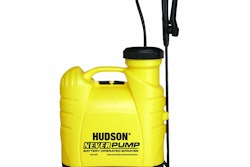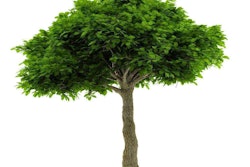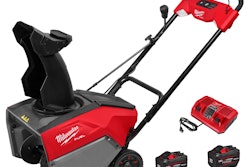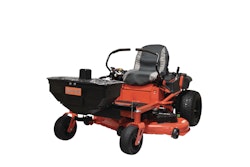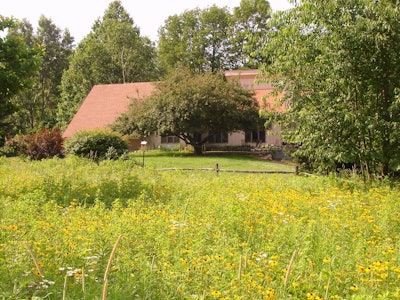 As more people see wildlife landscaping, the more often prairie-like yards with native plants will appear.
As more people see wildlife landscaping, the more often prairie-like yards with native plants will appear.Photo: Wildscapes LLC
Sustainability has been a buzzword in landscape design for the past few years now and its popularity is only growing. As people become more aware of the need to conserve resources and take care of the environment, a related idea is catching on as well – wildlife landscaping.
Creating a habitat for the neighboring animals may sound like the opposite of what most customers want, but there are many avid birdwatchers and fans of whimsical butterflies, so you may be surprised by the opportunities there.
There are four main needs that must be met to attract wildlife to a landscape: food, water, shelter and space.
Food can be provided via plants that produce fruit or seeds throughout the year. Insects are also an important part of birds’ diets so insecticides should be avoided. The main problem with most plants used in backyards is they are not native and therefore do not host as many bugs that local songbirds typically feed on.
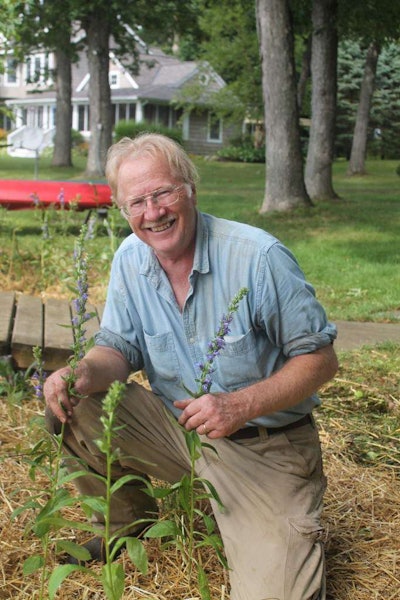 George Wise, owner of Wildscapes LLC, focuses niche in the landscape market that seeks more environmentally sound solutions to problems and wants.
George Wise, owner of Wildscapes LLC, focuses niche in the landscape market that seeks more environmentally sound solutions to problems and wants.Photo: Wildscapes LLC
“People certainly like butterflies and people like feeding birds,” says George Wise, owner of Wildscapes LLC, based in Climax, Michigan. “The challenge is in attracting insects that the birds are going to feed on.”
The best wildlife habitat is going to have native plants and lots of them. Because they are already adjusted to the region’s soils, climate and wildlife, they will survive longer, require less care than a plant not adapted to the area, and provide the food and shelter needed by local organisms.
“My passion is for the use of native plants that support wildlife and humans alike,” Wise says, “increasing plant diversity (and) thereby improving wildlife habitat and bringing colorful insects and birds close to home.”
Water is an obvious requirement, but it serves purposes aside from slaking animals’ thirst. Birds use water for bathing and most frogs need water to lay their eggs. Water sources for animals can vary from ponds to puddles to birdbaths to man-made streams.
“In certain parts of the country, there is concern about the decline in amphibians and big declines of certain species so some people have started building water features and water gardens in response to that,” Wise says.
Shelter is a slightly trickier need, and how it is supplied depends in part on how often the homeowner wants to be using the backyard. Wildlife need a place to feel safe from danger and raise their young. Having a diverse number of evergreen and deciduous trees, shrubs, and other plant life, while layering these types of plants, will create a more natural habitat in which they can find shelter.
When designing a wildlife landscape, ensure there are large areas that are undisturbed and have travel corridors for shy animal life. If there is already an established area in the landscape that is home to various species, keep human traffic areas as far away from it as possible. Instead, create viewing areas such as decks, where the client can view the animals without alarming them.
Space goes hand in hand with shelter. If the client doesn’t have a lot of space, they won’t be able to support much wildlife without the room for significant shelter. However, this doesn’t mean smaller backyards can’t attract wildlife. Birdhouses are unobtrusive and don’t take up much space.
A crucial bit of information needs to be made clear to your client when installing a wildlife habitat: It will take time before animals will find it and start visiting en masse.
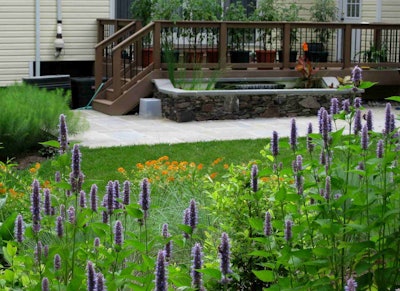 Magee Design is another company that is certified for wildlife habitat creation.
Magee Design is another company that is certified for wildlife habitat creation.Photo: Magee Design
It can even take a year or two before plants become mature enough to attract bees, butterflies and other pollinators.
For those who are interested in adding wildlife habitat creation to their services, the National Wildlife Federation started a program in 2013 in which landscapers can become Certified Wildlife Landscaping Professionals.
To participate companies must register, complete 18-20 hours of online training about native plants and wildlife habitat elements and pay a fee of $150 dollars.
Those who become certified are placed on NWF’s database of wildlife landscape professionals, where individuals and organizations can find wildlife-friendly landscapers in their area. Certification is valid for one year and must be renewed annually at a cost of $200.
Depending on your client base, wildlife landscapes may not hold a great deal of promise for your company. Accents of Nature Landscaping, Inc., based in Wilmington, Delaware, joined the program the first year it was available, seeing it as something that would be beneficial.
“They didn’t really do any real training,” says Joan Marquardt, administrative coordinator for Accents of Nature Landscaping. “They did online quizzes; it was very basic. If you’re into any kind of sustainability, you don’t have to be a rocket scientist to know the stuff they covered. The only benefit was getting listed on their website.”
Marquardt believes that some of the difficulties of getting certified could have been due to the program’s just getting started, but the company hasn’t renewed its certification since the first year, having received only one or two calls from people who found them listed on NWF’s site.
But Wise, Wildscapes’ owner, sees the program as a way to strengthen his credentials. The certification, he says, is more tangible to a potential client than his personal claim of having more than 20 years of experience in working with native plants. Wise’s company is still certified, yet he is unsure whether he would suggest it to other landscapers.
“I don’t know at this point yet,” he says. “It takes a while for anything, whatever it is, like certifications to get communicated widely enough to those people who find it usable and to people who are in your area. I think it is beneficial, but people shouldn’t look at it from a national perspective.”
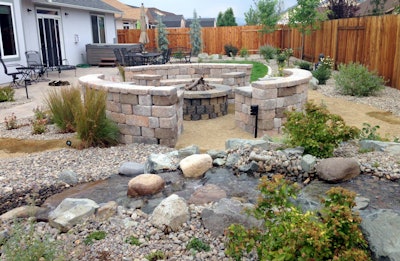 Here is an example of a Certified Wildlife Habitat created by Green Lizard Landscape.
Here is an example of a Certified Wildlife Habitat created by Green Lizard Landscape.Photo: Green Lizard Landscape
Green Lizard Landscape in Carson City, Nevada, has used the certification as a marketing tool. Clients don’t find them through NWF’s database, but they do become interested when they see it mentioned on Green Lizard Landscape’s website.
The company chose to get certified last year because the program matched their goals of not just creating landscapes but giving back to the environment.
“It (the program) doesn’t have revealing information, but it does cover what it takes to create a habitat and how many yards don’t meet those requirements,” says Travis Unruh, co-owner of Green Lizard Landscape. “It helps you work toward improving your landscaping style.”
Unruh feels that the program is definitely worth it for homeowners and helps makes landscape contractors more aware.
As of now, the program is temporarily closed to new applicants, but those who are interested in joining in the future can email [email protected].



